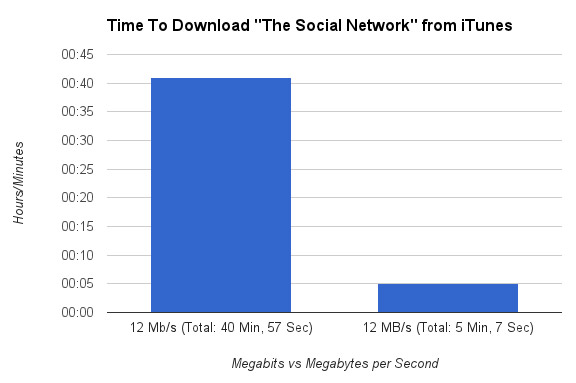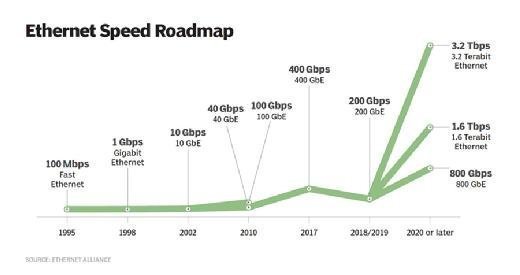The Future of Internet Speeds: Patterns in Megabits Per Second
The Future of Internet Speeds: Patterns in Megabits Per Second
Blog Article
Exactly How Megabits Per Second Impact Your Online Tasks
The concept of megabits per second (Mbps) plays an essential role in forming our online experiences. Greater Mbps can improve efficiency and minimize disruptions, while poor speeds might cultivate frustration and inadequacy.
Understanding Megabits Per Second
When considering net speed, it's important to comprehend the concept of megabits per second (Mbps), which functions as a common measurement for information transfer prices. This statistics quantifies just how much data can be transferred over a net connection in one second, supplying a clear understanding of performance capacities - Megabits Per Second. For context, one megabit is equal to one million bits, and Mbps is generally utilized to share bandwidth for various online activities
A higher Mbps shows a much faster internet link, enabling users to perform jobs such as downloading and install data, browsing web sites, and involving in online video gaming extra efficiently. For example, common surfing calls for around 1-5 Mbps, while streaming high-definition video may require 5-25 Mbps. Recognizing these needs is critical for figuring out the ideal net speed needed for particular activities.
Furthermore, the number of gadgets linked to a network can influence total efficiency. Numerous customers streaming, pc gaming, or downloading all at once can strain available data transfer, leading to slower speeds - Megabits Per Second. Assessing personal online practices and demands is important in choosing an internet plan that aligns with one's requirements, ensuring a smooth electronic experience
Streaming and Buffering Issues
Streaming high-def material has become a staple of modern on the internet enjoyment, yet it is commonly gone along with by annoying buffering issues. These interruptions can significantly take away from the seeing experience, bring about discontentment and prospective loss of audience involvement. Buffering happens when the data transferred from the streaming service is not received promptly enough to maintain a smooth playback, usually as a result of inadequate web speed gauged in megabits per second (Mbps)

In addition, real-time streaming can be influenced by network blockage, which occurs when numerous tools share the same transmission capacity. Subsequently, maximizing connection speed and ensuring ample Mbps is vital for a smooth streaming experience. As streaming services remain to advance, recognizing the effect of Mbps on buffering issues continues to be important for customers looking for continuous home entertainment.
Online Gaming Efficiency
The impact of net speed on on-line tasks extends past streaming, considerably affecting on the internet gaming efficiency. In affordable video gaming, reduced latency and high data transfer are crucial for a smooth experience. A fast connection minimizes lag, permitting gamers to respond quickly to in-game occasions, which can be the difference in between triumph and defeat.
Bandwidth, gauged in megabits per second (Mbps), plays a crucial role in supporting numerous devices and video gaming platforms all at once. Insufficient transmission capacity can lead to dropped links or reduced game quality, adversely affecting gameplay. Online multiplayer games need considerable information transfer, specifically throughout peak pc gaming hours when countless gamers are online.
Fast-paced first-person shooters require greater speeds to keep responsiveness, while turn-based approach video games may function moderately well on reduced speeds. As on-line pc gaming proceeds to evolve, with raising visual fidelity and even more intricate multiplayer environments, the need for greater Mbps will only magnify.
Video Conferencing Top Quality
In today's digital landscape, video clip conferencing high quality is heavily affected by web speed, specifically in terms of website link bandwidth and latency. High-quality video calls need sufficient transmission capacity to transfer sound and video information effortlessly. Typically, a minimum of 1.5 Mbps upload and download rates is suggested for basic interpretation video, while high-def video conferencing usually demands at the very least 3 Mbps.
Latency, or the delay in between sending and obtaining data, additionally plays an important role in the customer experience. click now Low latency ensures that discussions flow normally without uncomfortable stops or interruptions. Preferably, latency needs to be below 150 milliseconds for reliable communication. Greater latency can lead to echo, lag, and disjointed communications, which can hinder partnership and involvement during meetings.
In addition, multiple participants in a video clip meeting can strain available data transfer, necessitating even higher speeds. Network congestion, commonly brought on by simultaneous activities like streaming or downloading, can even more degrade video clip top quality. Hence, for organizations depending on video conferencing for remote collaboration, comprehending the relationship between megabits per general and second communication quality is vital for keeping performance and boosting digital communications.
Picking the Right Net Plan
Picking a proper net strategy is essential for guaranteeing ideal performance in various online tasks, specifically in setups that require high data transfer, such as video conferencing and online gaming. Megabits Per Second. When considering an internet strategy, it is necessary to examine both the rate and data allowance to match your details use requirements
For homes with several users participating in simultaneous tasks, a plan offering greater megabits per second (Mbps) is recommended. Typically, a minimum of 25 Mbps is suitable for common streaming and surfing, while plans exceeding 100 Mbps are better for more intensive jobs. Furthermore, consider the nature of your online tasks; video conferencing calls for a minimum of view it now 1.5 Mbps submit speed, while on-line video gaming may require a lower latency yet consistent link.
It is likewise important to assess your information cap. Limitless information plans can protect against throttling and disturbances, specifically if hefty usage is prepared for. Research study service suppliers in your area, as accessibility and pricing can vary. By attentively selecting a web strategy tailored to your demands, you can boost your on the internet experience, making certain smooth, undisturbed accessibility to your preferred activities.
Conclusion
In conclusion, the importance of megabits per second (Mbps) in forming online activities can not be overstated. Higher Mbps helps with seamless streaming, decreases buffering, improves gaming experiences, and guarantees top notch video clip conferencing. Alternatively, insufficient data transfer can cause discouraging disruptions and decreased performance across various jobs. Consequently, a comprehensive understanding of individual or household Mbps needs is crucial for picking an ideal web plan that properly supports varied online tasks and individual demands.

Normally, a minimum of 25 Mbps is appropriate for conventional streaming and browsing, while plans going beyond 100 Mbps are better for even more intensive tasks. In addition, consider the nature of your online activities; video conferencing requires at the very least 1.5 Mbps post rate, while on the internet gaming might need a lower latency yet constant connection.
Report this page